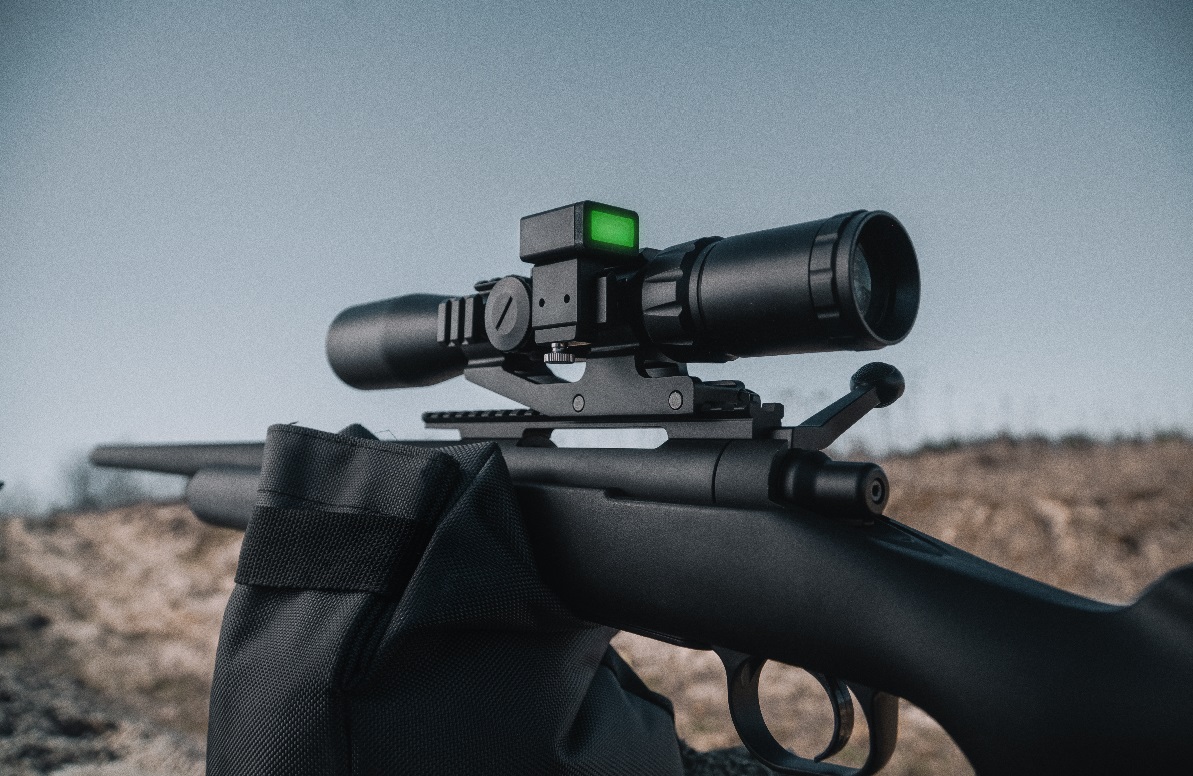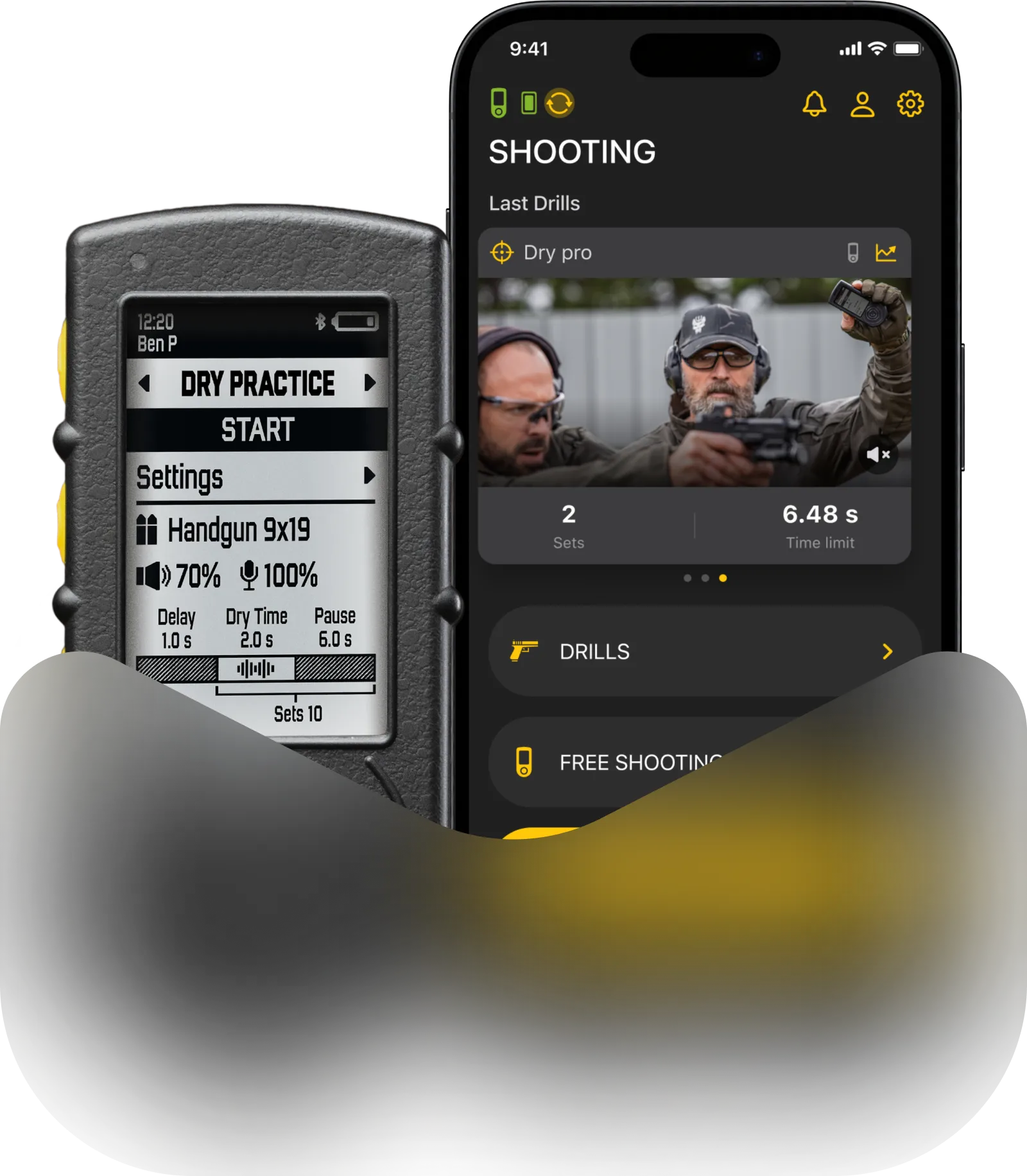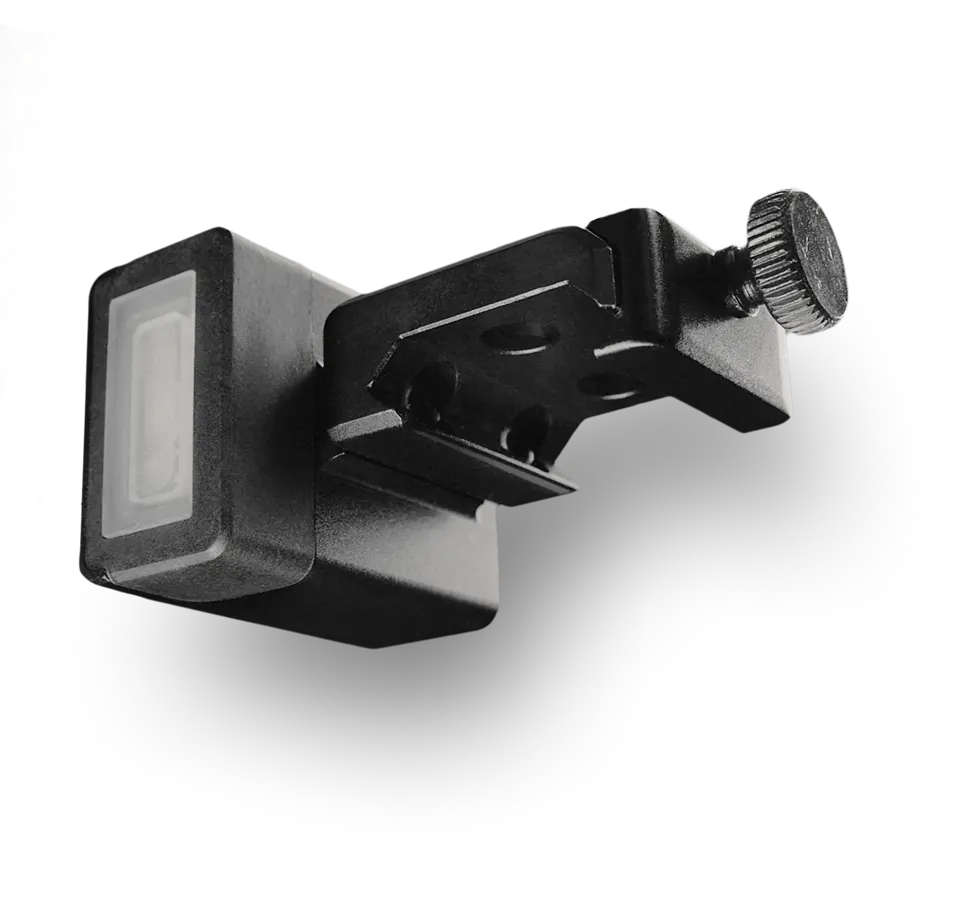In this article we will compare electronic and bubble levels based on two main criteria: accuracy and functionality. Let’s figure out which one is better and more reliable.
What Is Level Used for In Precision Shooting
A level is essential in precision shooting to ensure the rifle is perfectly horizontal, preventing cant error which can significantly affect accuracy. When a rifle is tilted, even slightly, it can cause the bullet to deviate from its intended path, especially at long distances. This tool helps maintain a consistent shooting position, ensuring that scope adjustments for elevation and windage are accurate, which is crucial for precise long-range shots: around 400 yards (365 meters) and beyond.
There are two main types of levels used: bubble levels and electronic levels. Bubble (aka spirit) levels are simple and reliable, using a bubble in a liquid-filled vial to indicate when the rifle is level. Electronic levels use sensors to provide digital readouts and real-time feedback, offering higher precision and additional features. Both types are used to ensure that the rifle and scope are properly aligned, enhancing accuracy and consistency in the field.
Now let’s compare these two types of levels.
How does Bubble Level works on Sniper Rifle
Bubble levels are made very simple:
- Vial. The main component is a sealed, slightly curved glass or plastic tube (vial) partially filled with a liquid, usually ethanol or a mineral spirit, which gives the tool its name. The liquid’s lower viscosity allows the bubble to move freely.
- Bubble. Inside the vial, there is an air bubble that moves to the highest point of the curvature.
- Housing. The vial is encased in a sturdy frame, often made of metal or plastic, to ensure durability and protection.
The vial is filled with liquid, leaving a small air bubble. When the level is placed on a surface, gravity causes the bubble to move within the liquid. The slight curvature of the vial ensures the bubble settles in the center when the tool is perfectly horizontal or vertical. The curvature increases the sensitivity and accuracy of the level. The vial has two lines marked equidistant from the center. When the bubble is centered between these lines, the surface is level.
Some spirit levels have additional vials set at specific angles (like 45 degrees) to measure inclines.
Electronic Level for sniper rifle: How does it work
Electronic levels use accelerometers or gyroscopic sensors to detect the rifle’s orientation relative to the horizontal plane. These sensors measure the tilt angle with high precision.
They can be mounted in various orientations on the rifle (left, right, horizontal, or vertical). This flexibility allows the shooter to position the level in the most convenient location for quick glances during shooting.
Unlike bubble levels, electronic levels provide immediate feedback through visual (LED) and sometimes audible signals, ensuring the shooter can make instant adjustments. In particular, with SG Pulse you can see the LED color with peripheral vision, continuing to look through the sight.
Components of electronic levels:
- Sensor module. Contains accelerometers or gyroscopes that measure tilt. This is the core component that detects the rifle’s cant angle.
- Digital display. Shows the angle of tilt numerically.
- LED indicators. Many electronic levels have a series of LEDs that light up to indicate tilt direction and severity. Green typically indicates level, while red or yellow indicates tilt direction.
- Control buttons. Used to adjust settings such as sensitivity, calibration, and LED brightness.
- Mounting hardware. Includes brackets, clamps, or adapters to securely attach the level to the rifle. The mounting system ensures the level remains stable and accurate.
- Power source. Usually powered by batteries, which can be rechargeable or replaceable. Battery life varies by model and usage.
- Housing. The entire assembly is encased in a durable, often weather-resistant housing to protect the electronic components from environmental damage.
The device can also include other components that make it even more functional. For example, the SG Pulse has a Bluetooth module to sync with the Drills app on your phone or watch for even more detailed feedback and saving of results.
It works even better with SG Timer: you can collect data from both level and timer at one place to see the big picture.
Types of Levels and Mountings for Precision Rifles
- Built into the scope. Integrated into the reticle or eyepiece. Directly in the shooter’s line of sight, no need to shift focus.
- Scope tube mounted. Stand-alone levels attached to the scope tube. It can be positioned for optimal visibility without obstructing other controls.
- Ring mounted. Integrated into or attached to scope rings. It combines leveling with ring mounts, reducing the number of separate components.
- Rail mounted. Attached to the picatinny rail. Can be mounted in various positions on the rail for optimal visibility.
- Integrated into stocks. Built into the rifle stock or chassis. No additional parts to attach, making for a cleaner setup.
Which is Better: Bubble Level vs Electronic Level
There was a survey on Sniper’s Hide website with one simple question: What level are you using for ELR shooting?
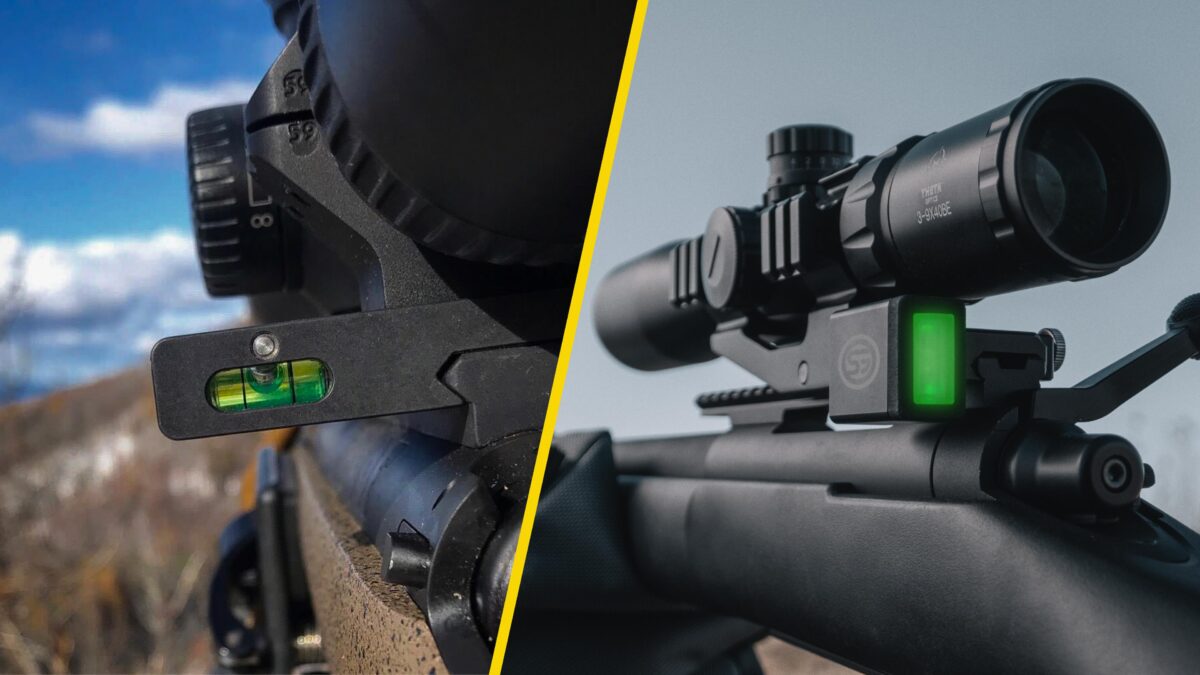
The votes were split evenly:
- 41.3% — Bubble Level
- 41.3% — Electronic Level
- 17.4% — Don’t know what Level is
The survey was conducted in December 2022. Since then, spirit levels have remained unchanged, while electronic levels have continued to improve. In particular, 2024 saw the release of SG Pulse, a multifunctional precise shooting assistant. This level is much more functional than any bubble level. It has several applications:
- Bright LEDs allow you to see if the rifle is level in your peripheral vision without taking your eyes off the target
- Stability mode indicates your MOA, ensuring you press the trigger in the best possible moment.
- Cosine indication for up and downhill shots.
The level also syncs with the Drills app via your phone or smartwatch. This would not be possible with the bubble level.
To learn more about the SG Pulse and all its features, click here.
Is Bubble Level more accurate than an Electronic Level
Bubble levels are described as sensitive, with a typical sensitivity of about 0.25 to 0.5 degrees when the bubble touches one of the guidelines. They rely on visual interpretation, which can introduce some human error.
Electronic levels offer more precise digital readouts and often allow for adjustable sensitivity settings. They can be set to sensitivities as fine as 0.2 degrees. They provide immediate feedback and reduce parallax errors since they do not require visual alignment of a bubble.
In general, bubble levels were considered more reliable until the late 2000s, when more accurate electronic levels came along. Today, electronic levels are often even more accurate than bubble levels. Bubble levels rely on a sniper’s eye. No matter how skilled you are, your eye is not the most accurate tool. Electronic levels, meanwhile, take more precise measurements and give you the feedback you need.
However, accuracy depends greatly on the quality of the level. This applies to both electronic and bubble levels.
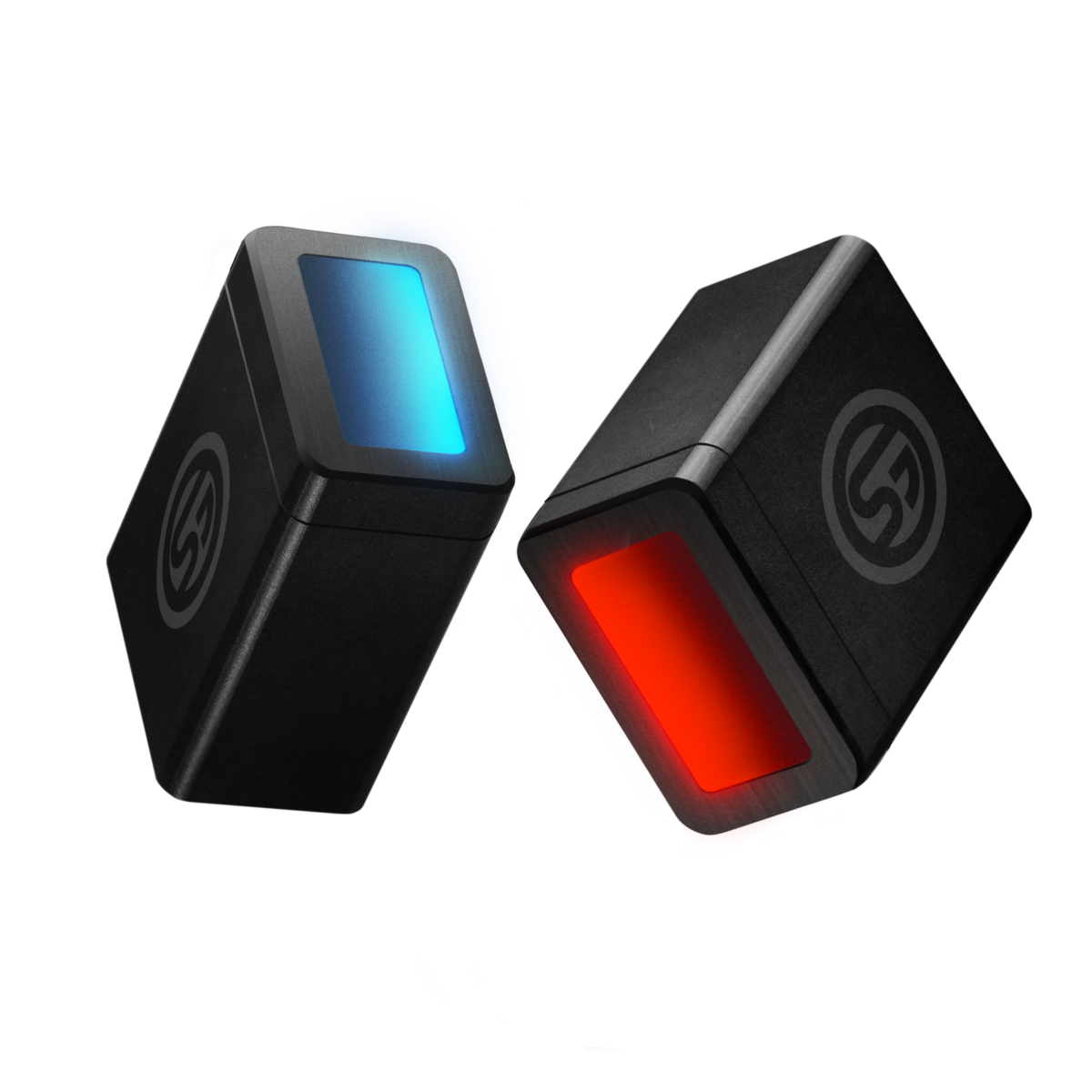
It’s all about Price vs Quality
Bubble levels cost around from $8 to $34 on Amazon right now. This is a really cheap upgrade for your rifle. It’s simple, durable, and easy to use. But bubble level is not nearly as functional as an electronic level.
If you value quality over price, if you want to use the best gadgets for your rifle and be as effective as possible at long range, nothing beats an electronic level. It gives you much more detailed feedback without sacrificing accuracy.
Right now, the SG Pulse electronic level is available for order.

